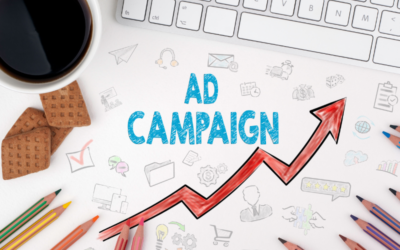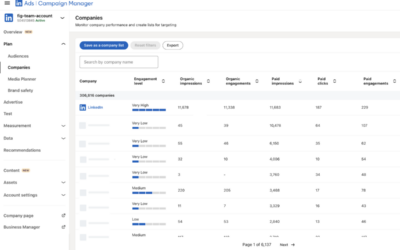Discover effective strategies to optimize your paid search campaigns for maximum results and drive valuable traffic to your website.
Understanding the Importance of Paid Search
Paid search marketing is a crucial component of any B2B company’s digital marketing strategy. By investing in paid search campaigns, businesses can ensure that their products or services are visible to potential customers when they search for relevant keywords on search engines like Google or Bing. Paid search allows companies to target specific keywords and display ads at the top of search engine results pages, increasing their visibility and driving valuable traffic to their website.
One of the key benefits of paid search marketing for B2B companies is the ability to reach a highly targeted audience. Unlike traditional advertising methods, paid search allows businesses to show their ads only to users who are actively searching for products or services related to their industry. This ensures that the traffic driven to their website is more likely to convert into leads or customers.
In addition to targeting specific keywords, paid search campaigns also offer advanced targeting options such as geographic targeting, device targeting, and audience targeting. This enables B2B companies to further refine their audience and ensure that their ads are shown to the right people at the right time.
Understanding the importance of paid search marketing is crucial for B2B companies looking to maximize their online visibility, drive targeted traffic to their website, and generate valuable leads or sales.
Researching and Selecting the Right Keywords
One of the first steps in optimizing your paid search campaigns is researching and selecting the right keywords. Keyword research involves identifying the most relevant and high-performing keywords that are likely to drive valuable traffic to your website.
To start, it’s important to brainstorm a list of keywords that are relevant to your business and industry. These can include product names, industry terms, or specific pain points that your target audience may be searching for. Once you have a list of potential keywords, you can use keyword research tools like Google Keyword Planner or SEMrush to analyze their search volume, competition, and cost per click (CPC). This will help you identify the keywords that are worth targeting in your paid search campaigns.
When selecting keywords, it’s important to strike a balance between relevance and competition. Highly competitive keywords may have a high search volume, but they can also be more expensive to bid on and may not necessarily result in high-quality traffic. On the other hand, less competitive keywords may have a lower search volume, but they can be more cost-effective and may attract a more targeted audience.
Once you have selected your keywords, it’s important to regularly monitor and update your keyword list based on their performance. This will help you optimize your paid search campaigns and ensure that you are targeting the most effective keywords for your business.
Crafting Compelling Ad Copy
Crafting compelling ad copy is essential for driving clicks and conversions in your paid search campaigns. Your ad copy should be attention-grabbing, relevant to the user’s search query, and compelling enough to entice them to click on your ad.
To create effective ad copy, it’s important to include your target keywords in your headlines and ad text. This will help make your ads more relevant and increase their chances of appearing in search engine results. Additionally, consider highlighting the unique selling points of your products or services to differentiate yourself from competitors.
Another important aspect of ad copy is the call-to-action (CTA). Your CTA should clearly communicate what action you want the user to take, whether it’s signing up for a free trial, requesting a demo, or making a purchase. Including a sense of urgency or offering a special promotion can also help increase click-through rates and drive conversions.
Lastly, don’t forget to include ad extensions like sitelink extensions, call extensions, or review extensions to provide additional information and increase the visibility of your ads. These extensions can help improve the performance of your paid search campaigns and drive more valuable traffic to your website.
Designing Landing Pages that Convert
Designing landing pages that convert is crucial for maximizing the ROI of your paid search campaigns. A landing page is the first page a user sees after clicking on your ad, and it plays a vital role in convincing them to take the desired action, whether it’s filling out a form, making a purchase, or requesting more information.
When designing landing pages, it’s important to ensure a seamless user experience. The landing page should be relevant to the user’s search query and the ad they clicked on, providing them with the information they were looking for. It should also have a clear and compelling headline that grabs the user’s attention and communicates the value proposition of your offer.
In terms of design, keep your landing pages clean, visually appealing, and easy to navigate. Use high-quality images or videos to showcase your products or services, and include persuasive copy that clearly explains the benefits of choosing your business. Additionally, make sure your landing pages are mobile-friendly, as an increasing number of users are accessing the internet through their smartphones or tablets.
To increase conversions, consider including trust signals such as customer testimonials, case studies, or security badges to build trust and credibility. Additionally, use persuasive elements like clear calls-to-action, limited-time offers, or free trials to incentivize users to take the desired action.
Regularly testing and optimizing your landing pages based on user behavior and feedback is essential for driving higher conversion rates and maximizing the effectiveness of your paid search campaigns.
Tracking and Analyzing Campaign Performance
Tracking and analyzing the performance of your paid search campaigns is crucial for optimizing their effectiveness and maximizing your return on investment (ROI). By monitoring key metrics and analyzing campaign data, you can identify areas of improvement, make data-driven decisions, and continuously optimize your campaigns for better results.
One of the most important metrics to track in paid search campaigns is click-through rate (CTR), which measures the percentage of users who click on your ads after seeing them. A high CTR indicates that your ad copy is effective and relevant to users’ search queries, while a low CTR may indicate that your ads are not resonating with your target audience.
Conversion rate is another important metric to track, as it measures the percentage of users who complete a desired action, such as making a purchase or filling out a form. A high conversion rate indicates that your landing pages are compelling and persuasive, while a low conversion rate may indicate that there are issues with your landing page design or offer.
Other metrics to consider tracking include cost per click (CPC), cost per conversion (CPA), and return on ad spend (ROAS). These metrics can help you assess the cost-effectiveness of your campaigns and identify areas where you can optimize your budget and bidding strategies.
In addition to tracking metrics, it’s important to regularly analyze campaign data and identify trends or patterns. This can help you uncover insights about your target audience, keywords, or ad copy that can inform future optimization strategies.
By continuously tracking and analyzing campaign performance, you can make data-driven decisions and optimize your paid search campaigns for maximum results.



